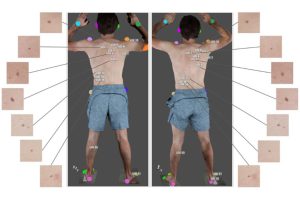
Because of its rapid spread, early detection is crucial for treating melanoma. Researchers from John Hopkins are currently studying how computer vision can be used to track skin lesions across multiple scans from different visits by the patient. It is a novel approach that may detect skin lesions the human eye may miss.
The research team, consisting of researchers from the John Hopkins Hospital, Lumo Imaging, and the Eunice Kennedy Shriver National Institute of Child Health and Human Development, made use of texture analysis and geometry to identify skin abnormalities through a 3D textured mesh. The novel framework can find skin lesions regardless of differences in camera view and body pose which is particularly important because there is no guarantee that the patient will be in the exact same position for every body scan.
The approach identifies the key points on the body to estimate the location of a previously identified skin lesion. Then details such as shape, texture, and size are used to determine a more precise location of the lesion on the new scan.
‘Imagine that we want to look for a house in New York City. If we’re given the locations of some landmarks, like the Empire State Building, and how far the house is from those landmarks, we know the approximate region the house is located in,’ explains Wei-Lun Huang, doctoral candidate in the Department of Computer Science. He is advised by co-authors Mehran Armand, professor of orthopaedic surgery and Misha Kazhdan, professor of computer science.
‘The texture information we utilize is similar to using a picture of the house from Google Street View to narrow down our search,’ Huang says. ‘But what if the initial region doesn’t include the house we want, or what if there are multiple similar houses nearby?”
To ensure that the correct lesion is found on the new total-body scan, its similarity is measured to the one they are looking for in terms of landmark alignment, texture similarity, and uniqueness to its location.
‘If the lesion correspondence is found with confidence, we add it as a new landmark to help find the correspondence of the remaining lesions of interest,’ Huang says.
The novel framework was evaluated on public and private datasets with impressive results comparable to state-of-the-art methods.
‘Our ultimate goal is automatic full-body lesion detection to allow for automated longitudinal skin lesion tracking. This will allow our method to suggest that physicians pay particular attention to a lesion that has evolved abnormally,’ says Huang.
By Marvellous Iwendi
Source: JHU